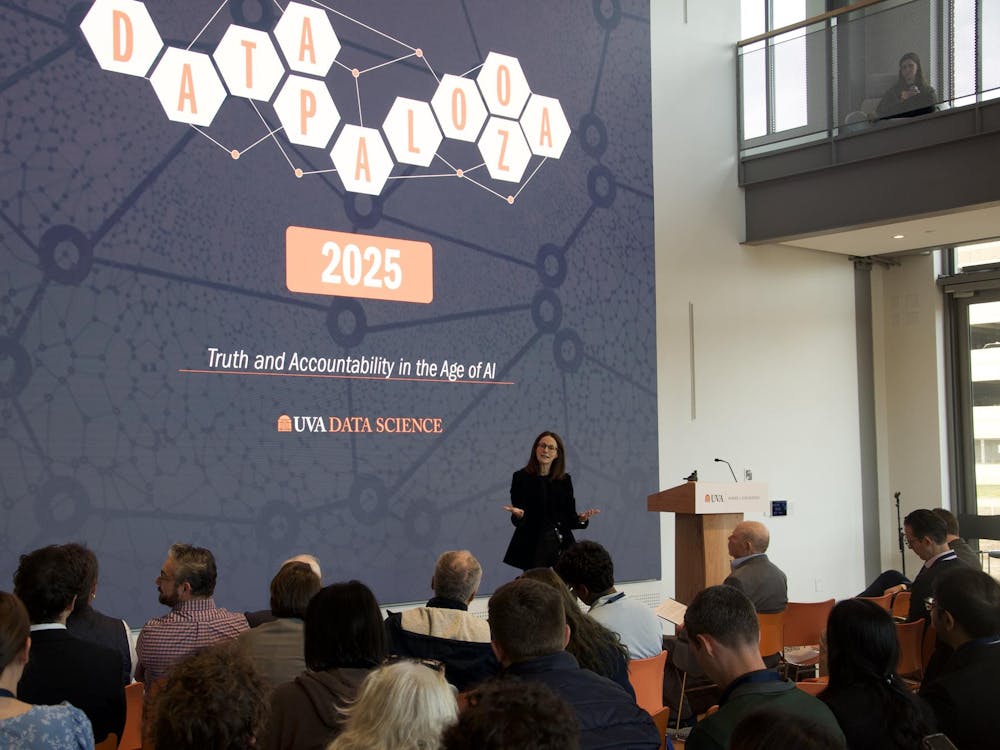For more than three decades, a small number of University students annually find reprieve from their college monetary woes by locking themselves in a hotel room and blowing their nose for dollars.
Last month, a $2.2 million grant from the National Institutes of Health raised the stakes once again for students hoping to gain a spot in this lesser-known University tradition -- the University Health System's annual cold study.
The new NIH grant will fund a three-year clinical study on whether echinacea, a popular supplement that is a leading seller on the herbal market, can be used to fight the common cold. Under the supervision of principal investigator Ronald Turner, a professor in the division of infectious diseases, department of pediatrics, the Health System will recruit 450 subjects for the study over the course of the next year.
As of last week, 280 students volunteered to be screened to be picked for the 80 spots in the October study, which will take place around the time of the University's reading holiday. This weekend will mark an anxious time for those students hoping to get sick for cash as Turner's group plans on informing those chosen for the study Monday. Each lucky subject may then look forward to a four-day, five-night solo hotel room stay and a $700 check for their troubles.
Why Echinacea?
While millions of Americans swear by the medicinal properties of echinacea, and although products that include echinacea garnered over $190 million last year, the herbal supplement has not yet proven effective in clinical research trials.
"The medical community views echinacea with a fair amount of skepticism," Turner said. "Nobody knows if it works, or if it does work nobody knows how."
According to Turner, part of the problem in studying echinacea clinically is that all of the products containing it are different. Because of this hitch, no one has identified one active factor in the product.
The use of echinacea dates back to the time of the American Indians. Plains Indians used various species of the prickly, cone-like, purple plant to treat anything from sore throats to toothaches to snakebites, measles, smallpox and even cancer. Product use grew popular in the early 20th century and Europeans have used the medicine extensively since the 1930s.
Today, many Americans feel strongly about the medicinal properties of echinacea despite the fact that such benefits remain unproven.
"I swear by echinacea," fourth-year college student Colin Peppard said. "I've been using it since I was a kid. I go out and buy it if I even think a cold might be coming on."
According to Grant Ferrier, Editor of Nutrition for the National Business Journal, echinacea broke out of a traditional folk remedy and onto the national market in the mid-1990s. Ferrier said somewhere around 200-250 different brands of echinacea products exist today. Although seven or eight of those brands bring in $10 to $20 million annually, most echinacea in the United States is cultivated on a small scale on local farms.
Weighing Snot
Turner is now the third researcher conducting a cold study at the University Medical Center, which has long been known internationally as a hotbed for common cold research. Just this past summer Jack Gwaltney, chairman of the division of epidemiology and virology in the department of internal medicine, developed a new combination drug therapy that stopped viral infection and reduced symptoms by as much as 73 percent with no serious side effects in subjects. Gwaltney has been a pioneer of cold research at the University since the 1970s. His study this summer was funded by the University and the new treatment is licensed to Coldcure, Inc., based in Richmond, for development into commercial use.
Turner's echinacea study represents a new approach to studying the common cold.
Turner will use a crop of echinacea plants processed using three different extraction methods to produce three different preparations of the product for subjects in the study. One group will receive echinacea before being infected with the cold and another group will receive it after being infected. In addition, some subjects in each group will receive a placebo pill to compare results. Turner said one question he hopes to answer is whether echinacea affects viral replication or the body's inflammatory response.
After a few preliminary visits for blood work, participants in Turner's study will then be infected with the Rhino virus, the most common cause of the cold. Then it's off to the Doubletree Hotel for a temporary quarantine.
"We set them up in the hotel room with a TV, Showtime and anything they want to bring, as long as it doesn't breathe," said Pat Beasley, cold study coordinator in the health system.
"I've seen people bring exercise equipment, sewing machines -- one guy even brought a rowing machine," recalled Beasley, who has worked with the cold study for 25 years. "It usually isn't until day three or four that many of them decide to do some school work."
Participants, who 98 percent of the time are University students, then receive three meals a day from the hotel kitchen as well as a nighttime snack. In addition to not leaving their rooms, another rule by which participants must abide is that they cannot throw away any of their tissues. At the end of the study, researchers collect all the used tissues and weigh them to figure out the total volume of mucus the participant produced.
Although students only may participate in each different cold study one time, Beasley said the she does see a lot of repeat students for the different studies.
For those unlucky students who get passed over for Turner's upcoming study, the group plans on running another round in November. Screenings for the next study will take place Oct. 17 at the Health Center and it's a sure bet that once again hundreds of University students will pray to be the supposed lucky ones who end up with sore throats, coughs, aches, pains and stuffy noses.






